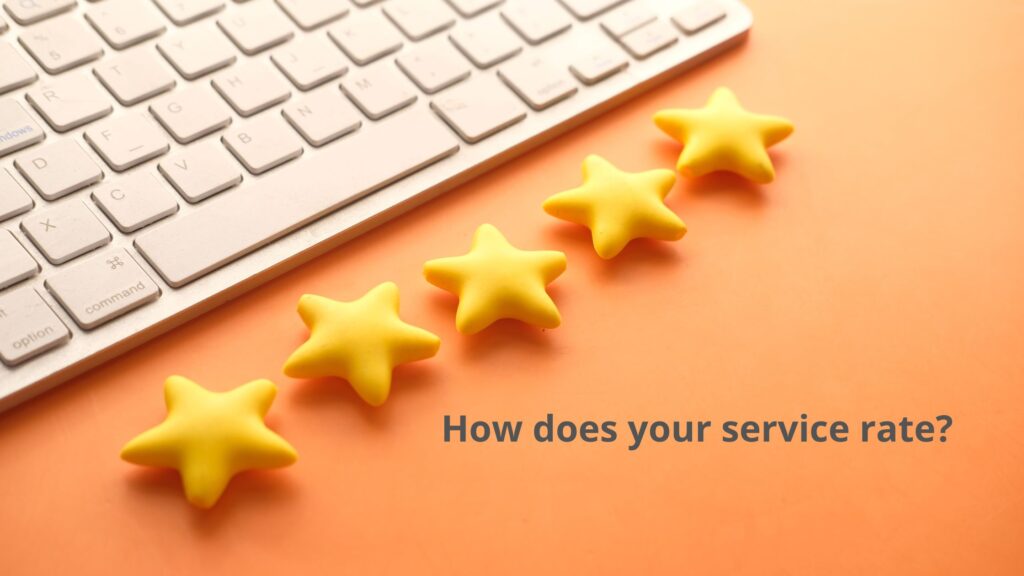
Some Say English is the Language of Business, But the Language of Care and Trust Is Your Client’s Native Language
Is your business building relationships? You’re likely providing a valuable product or service to your customers, but in our increasingly multilingual business world, you’ll need more than that to build relationships with your customer base. In fact, if you’re not serving customers in their native language, odds are that you’re losing clients and revenue regardless of the quality of your product.
Market data consistently suggests that a good product is often not enough to retain customers, clients, or patients (depending on your type of organization). For individuals with limited English proficiency, building trust and rapport requires interacting with them in the language they are most comfortable with.
If you’re not offering multilingual customer support, here are a few things to consider:
-
68% of customers leave companies that they feel do not care about them
-
Showing customers you value and appreciate them builds customer loyalty. When you can keep your existing customers, and develop a relationship with them, you generate greater customer satisfaction. Companies with more happy customers tend to have better online reviews and feedback, and are more likely to get the attention of new customers. This is especially true in a day and age when over 75% of shoppers consult reviews before even considering a company!
Here are a few statistics to show you how vital clear communication is to customer satisfaction when customers have limited English proficiency (LEP):
-
57% of global customers expect brands to have their services in their native language.
-
68% of customers showed preference for companies with multilingual customer support in their native language.
-
Two-thirds of companies said that culture and language barriers made it harder for their companies to enter new markets.
Given the data, it’s not hard to see why the shift towards multilingual solutions is becoming essential. Here’s how it works…
What do we mean by multilingual solutions?
Simply put, a multilingual solution makes it as easy as possible for someone to engage with your business at every step of the process. For someone with limited English proficiency, the ability to navigate your website and engage with customer support, all in their native language, cultivates greater trust, comfort, and satisfaction.
Communicating with prospects and clients in their native or preferred language can also help you to expand your client base and improve existing relationships. Providing multilingual support demonstrates that you value your LEP client’s comfort and input.
If your service is in the healthcare industry, then LEP patients need to communicate their needs and clearly understand the doctor’s recommendations. The existence of language barriers can even be a danger to an LEP patient in medical crisis. That’s why translated medical documents and access to an interpreter are crucial.
And the list goes on!
- Providing energy solutions? Then global customers expect communications to be available in their language.
- Working in community development? Then it’s vital for multicultural community members to feel welcomed into the conversation.
- Offering a tech service? Then your website and customer service need to serve customers in their native language to allow seamless navigation and use of your product.
Ways to Improve Client Experience by Offering Multilingual Solutions
So you’ve identified your organization’s need for multilingual customer support and other solutions, but what does this look like in practice? Here are some examples of multilingual solutions that can elevate your relationship with LEP customers.

1. Translate proposals, contracts, sales documents, etc. to your customer’s native language. Our client Results Physiotherapy did it, and look at their results!
2. Provide/offer interpreters for sales pitch meetings; this can be done remotely or in-person depending on the situation. Recently, one of our international customers decided to utilize our Simultaneous Remote Interpreters when pitching their service to an important potential client. Even though they had internal employees outside the sales team that spoke the potential client’s language, they chose to use a professional interpreter so they could still use their top sales presenters for the pitch – just with a simultaneous French “voiceover.” And it worked! They won the contract and are now using remote interpreting for all of the follow up, onboarding, and training for their new client.
3. Provide/offer interpreters and translated supporting materials for onboarding and training. Listen to a first-hand account of how SpokenHere used translation to help Monogram Foods build better relationships with their LEP workforce.
4. Provide a translated and localized website. Localization is a vital component to translation in general, but especially for website and marketing translations. Localization takes your translation one step further by taking specific cultural/”local” ideas and wording into consideration so your message is relevant as well as NOT offensive.
5. Offer remote interpreting for customer service calls and in-person client meetings. This can be especially vital for non-profit
s and healthcare organizations that work with at-risk individuals, such as our client Youth Villages. Here’s an example of how they use SpokenHere to provide multilingual solutions, such as 24/7 on demand remote interpreting for their victim hotlines and translated flyers and documents to inform LEP individuals of their vital support services. Our client Axiom Medical also had great success after adding remote interpretation for their telehealth services: their call volume increased by 1,650% after introducing multilingual customer support!
6. Send fully translated appreciation messages, or even just add a short, personal note in their native language to show you care.
These are just a few examples of how effective multilingual solutions can have an impact on your LEP customers. The list of unique ways that multilingual support helps you to build relationships with your customers is fairly endless!
So What’s Next?
If an English-speaking organization fails to provide multilingual service options they are isolating nearly 80% of the world’s population. That’s too many potential customers to be disconnected from, especially when multilingual organizations consistently show higher customer satisfaction scores and brand loyalty.
How can you start offering multilingual solutions in your own organization? Start by talking with us about your specific needs, your team, your goals, and most importantly… your customers. At SpokenHere, we deliver authentic language services in over 250 languages (to over 2000 clients on 6 continents), for organizations just like yours. Let us show you what multilingual solutions can do for you!
